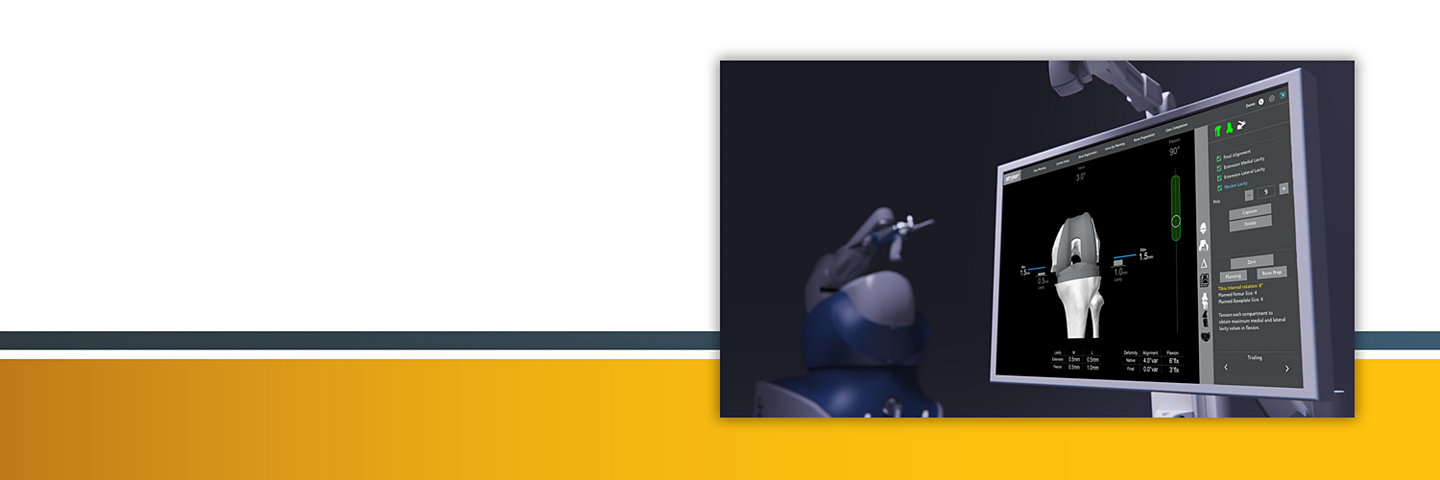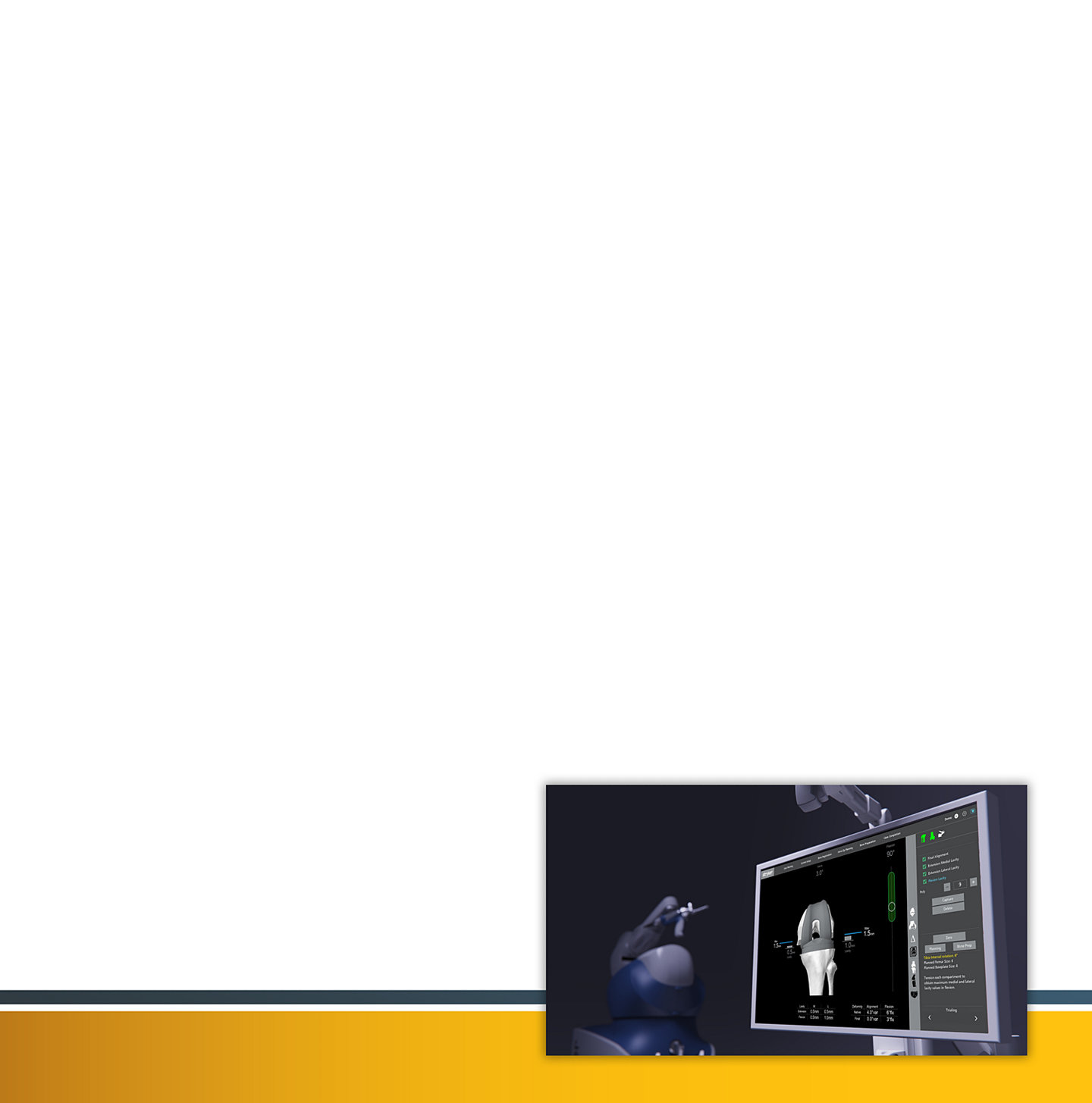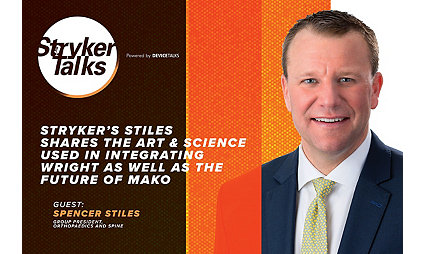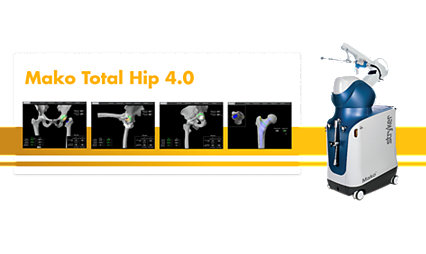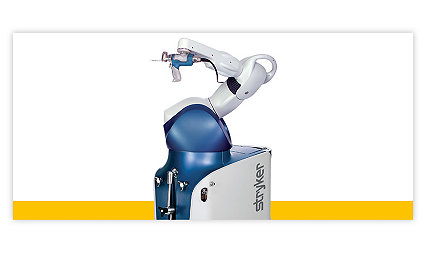06-Jul-2023
Osteoarthritis is the most common form of arthritis, impacting more than 500 million people worldwide.1 In addition, it’s the leading cause of disability in older adults.1 It’s also one of the reasons that Tom Chergey, Vice President & General Manager, Mako, became passionate about working for Stryker. Seeing how a hip replacement changed his grandmother’s life for the better drove him to apply for a position as Joint Replacement Sales Representative 18 years ago.
Throughout his tenure, Tom has seen the orthopaedics industry transform, with new surgical implants, approaches, systems and robotics entering the space. Today, he’s never been more excited to work at Stryker, in an industry where he and his team help improve patient lives. Tom shares insights into how Mako SmartRoboticsTM continues to drive innovation in hip and knee replacement, and how it is poised to do the same across specialties over the next five to 10 years.

What is Mako SmartRobotics?
“Since the introduction of Mako in 2006, and the launch of Mako Total Knee in 2017, Stryker’s industry leadership with Mako SmartRobotics has transformed orthopaedics with its revolutionary technology and clinical outcomes. We believe that the CT scan is critical to unlocking clinical value for the surgeon and patient. Mako enables surgeons to place implants based on an individual patient’s unique anatomy. It's been fantastic to see Mako Systems installed in 35 countries with over 1 million Mako global procedures completed to date.”
How is the R&D team innovating?
“Stryker invests heavily in R&D. We are always thinking about what’s next and how we can improve —that will not change. If we look at the formation of Stryker’s Digital, Robotics and Enabling Technologies (DRE) organization and the Advanced Digital Healthcare innovations we offer, both were designed to help make healthcare better for care teams and drive innovation across the enterprise.”
What’s new with Mako robotics?
"This year, during the American Academy of Orthopaedic Surgeons 2023 Annual Meeting, we announced the next advancement of Mako SmartRobotics – Mako Total Knee 2.0. Over 500,000 Mako Total Knee procedures over the past six years helped us design Mako Total Knee 2.0. It’s designed to deliver the same, trusted outcomes surgeons expect from Mako with a new, elevated user experience. The system combines the Mako Technology with our clinically proven Triathlon implants to help surgeons provide enhanced outcomes for patients.”
How did you work with your customers to develop Mako Total Knee 2.0?
“As we looked for ways to evolve Mako Total Knee 1.0, we had many conversations with surgeons using Mako. We wanted to know: What was working well? What could work better or easier? Taking their feedback and all the information we had gathered from more than half a million Mako procedures, we focused Mako Total Knee 2.0 on enhancing surgeon experience, confidence and efficiencies. It introduces a new intuitive design, customizable workflow and other key features, including a digital tensioner that allows surgeons to assess the stability of the knee intraoperatively during a total knee arthroplasty without the need for additional instrumentation.”
What makes you most excited about the future?
"There’s often a perception that robotics is complex and can be intimidating, which is why we are so excited about the launch of the Mako Total Knee 2.0 update – it’s designed for ease of use. I see Mako Total Knee 2.0 continuing to expand our global position as the leader in robotics, setting us even further apart from alternative technologies. Mako SmartRobotics™ will drive innovation across specialties. Our teams are collecting feedback to support the development of new clinical applications and indications, and so far, that feedback has been positive. It’s such a privilege to be part of a team that is transforming orthopaedics and helping to make healthcare better through the continuum of care.”
More about Stryker’s Mako SmartRobotics™
Our robotic surgery expertise is 17 years in the making. In 2013, Stryker saw the long-term potential benefit that Mako robotic surgery could have on patients undergoing joint replacement surgery and acquired MAKO Surgical Corp. We continue to bring this evidence-based healthcare technology to care teams around the world.
1 million+
Mako procedures
performed globally to date
Mako Systems installed in
35 countries
and every U.S. state
17 years
of robotic-arm assisted surgery experience
330+ studies
published, peer reviewed studies
1,500+ patents
and patent applications established globally
1 million+
patient records and 105 million actionable data points in Mako Insightful Data Analytics database
Related news
Stryker unveils Mako Total Knee 2.0 at the AAOS 2023 Annual Meeting
Learn moreStryker’s Stiles shares the art and science used in integrating Wright Medical as well as the future of Mako
Learn moreStryker releases Mako Total Hip 4.0
Learn moreMako SmartRobotics™ hits 500,000+ procedures
Learn more- Hunter J., David, March, Lyn, Chew, Mabel. Osteoarthritis in 2020 and beyond: a Lancet Commission. Volume 396, Issue P1711-1712. Published November 4, 2020. Accessed May 3, 2023 via https://www.thelancet.com/journals/lancet/article/PIIS0140-6736(20)32230-3/fulltext#seccestitle10
Those living with joint pain are encouraged to speak with their healthcare professional about available treatment plans. As a provider, surgeons can help patients get educated on options that may help prevent further pain and complications. To learn more about joint health treatment options for patients, please visit makosmartrobotics.com.
All surgery carries risk. Surgeons must rely on their own professional clinical judgment when deciding whether to utilize a particular technology when treating a patient in their own practice. Stryker does not dispense medical advice and recommends that surgeons be trained in the use of any technology before using it in surgery. Not all patients will have the same postoperative recovery and activity level. Individual results vary.
JR-MKOSYM-ARTI-677450

